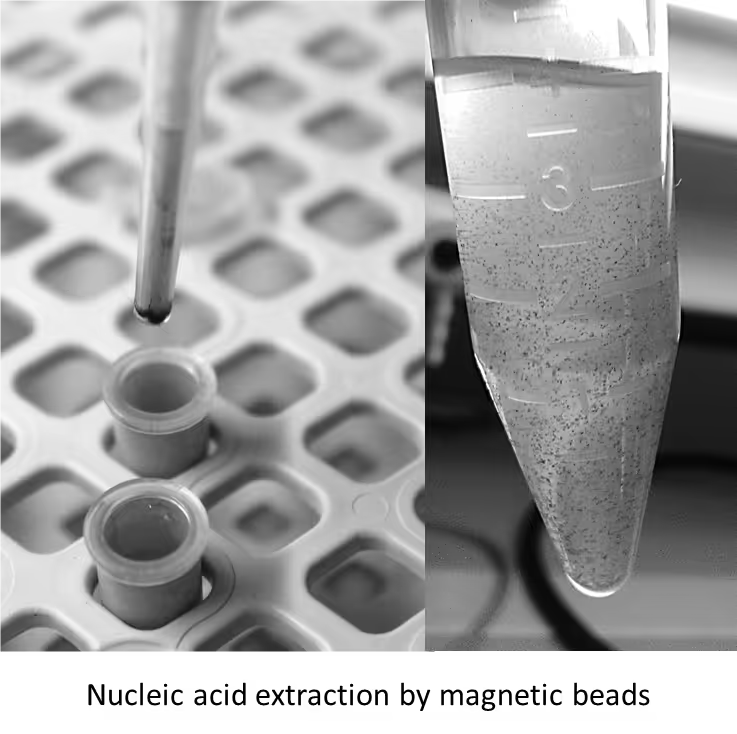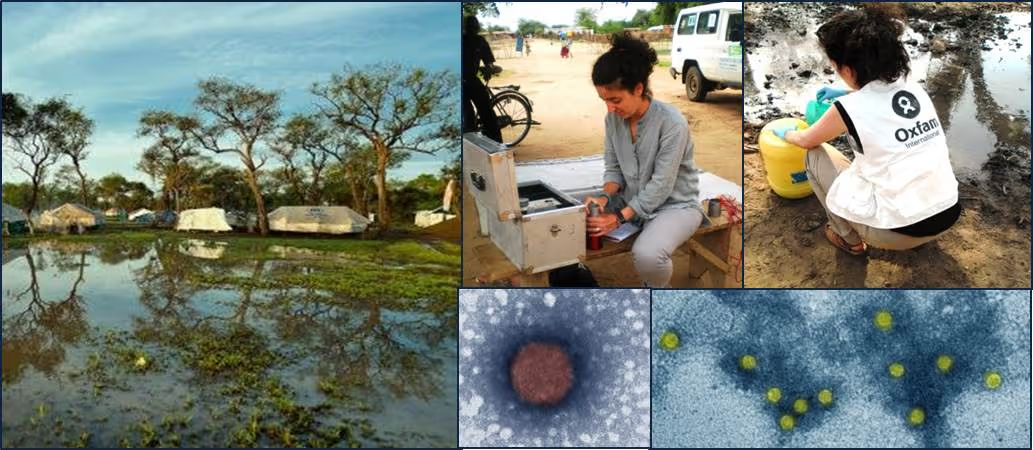Feature: Interview with the University of Barcelona team

Project: VirWaTest: Development of an affordable point-of-use test for detection of enteric viruses and viral faecal indicators in water
Lead Organisation: University of Barcelona
Partners: Oxfam Intermon, Geniul S.L.
Funding Stage: Development
Interviewees: Rosina Girones and Marta Rusiñol
What happens when there are viral outbreaks in refugee camps? How can we accurately test water accurately and quickly to determine which viruses are present? The University of Barcelona have been working on an appropriatem and accurate test that can be used in the field.
The standard method for testing water requires a specialised team to collect samples and shipping to a laboratory, although there are also tests that can be done at the point of use but these are not robust enough to test for the variety of infections - such as Hepatitis E - caused by bacteria (small organisms), viruses (a protein coat encasing DNA or RNA) and protozoa (single celled organisms).

This solution is a portable system to test the concentration of pathogens, with a special focus on viruses, which would be indispensable in the field. This already exists for E.coli but we wanted a system that would efficiently detect viruses as well as a wider range of contaminants, and be versatile i.e. could be used solely in the field or by sending samples to a lab.
What's the process and how easy is it to train non-experts to use it?
The process is based on skimmed milk flocculation to detect all pathogens. Flocculation has been used in many laboratories across the globe in different temperatures – it is robust. The flocculation protocol takes 2 days by following these steps:
- Collect 3 samples of water, each in 10 litre bottles, this is to ensure there is enough water for testing (using water samples from the same source of different sources).
- Acidify the sample using a few measuring spoons of citric acid.
- Put it in a mixer (a simple magnetic platform).
- Add a measure of 100ml skimmed milk to the water and leave for 5-8 hours. The skimmed milk absorbs the viruses and concentrates them into a small volume of sediment.
- Once the mixing is complete, allow to settle for 5 hours (minimum) for the sediment to sink to the bottom.
- Collect the pellet (sediment) at the bottom of the bottle for testing via a nucleic acidic extraction using a polymerase chain reaction (PCR) machine. Testing can be done in any lab (provided the sample is kept at room temperature during transportation) or in the field using a battery powered PCR machine. A nucleic acid extraction necessitates some training and practice as it is a specialised process. This step requires some expertise, which we have been developing a video and training materials for to ensure non experts have sufficient expertise to use it.
Is it cost efficient?
There is an initial cost for the pack, roughly 1000 Euro, but for subsequent testing the costs are minimal because skimmed milk and bottles are the only items that need to be regularly replenished. However, the PCR machine costs 4000 Euro.

Can you give a specific example in practice of how the equipment and protocol has had an impact in the field?
We've done tests with Oxfam in a camp in the Central African Republic (CAR) using non-expert users (the final step was done in a lab in Barcelona). We also sent the protocol to La Universidad de las Americas in Ecuador. We had good feedback on the performance of the kit. Adenoviruses (a group of viruses that can infect the membranes (tissue linings) of the respiratory tract, eyes, intestines, urinary tract, and nervous system) were detected in both sites. We also tested raw samples ourselves to double check the results from the field. The results were encouraging.
Based on feedback from the teams an important change was made; to eliminate the filtration step, preferring instead to let the flocculation settle and collect the sediment. This is because many issues can be caused by the filter clogging. Using the filter also caused variability in the results so removing this step allowed for more reliable and replicable results.
Was there anything unexpected that you learnt, or a use for your project you didn’t expect?
There are different variables involved in testing water quality at the point of use, including temperature, composition and turbidity. We tested various methods and milk flocculation gives a higher recovery compared to many other methods – even though many gold standard methods use a filter process. Using milk flocculation can also be used to test for many other pathogens so is more diverse.

What are the next steps, particularly for uptake and dissemination? Who will be involved in further testing of the product?
We want everything in the pack to be completely ready for use and to create a tutorial that will cover all the steps (whether lab testing or field testing). Our next step is to create a video for how to use the PCR machine.
We have been in touch with Oxfam who want to use the prototypes in a refugee camp in Chad and require a member of staff from the University of Barcelona to support the testing and training non-experts, which we are happy and ready to offer.
Finally, we presented the equipment to different international companies and we have a video and article which we are looking to publish in a journal soon.
Stay updated
Sign up for our newsletter to receive regular updates on resources, news, and insights like this. Don’t miss out on important information that can help you stay informed and engaged.
Related articles
.png)


Explore Elrha
Learn more about our mission, the organisations we support, and the resources we provide to drive research and innovation in humanitarian response.